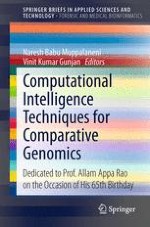2015 | OriginalPaper | Chapter
Modeling Artificial Life: A Cellular Automata Approach
Authors : Kunjam Nageswara Rao, Madugula Divya, M. Pallavi, B. Naga Priyanka
Published in: Computational Intelligence Techniques for Comparative Genomics
Publisher: Springer Singapore
Activate our intelligent search to find suitable subject content or patents.
Select sections of text to find matching patents with Artificial Intelligence. powered by
Select sections of text to find additional relevant content using AI-assisted search. powered by
